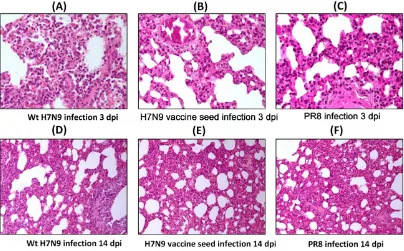Preclinical evaluation of the safety and pathogenicity of a live attenuated recombinant influenza A/H7N9 seed strain and corresponding MF59-adjuvanted split vaccine
Full text
Figure




Related documents
This divergence generates testing challenges for international policy initiatives when it comes to addressing health worker migration and the Global Goal of providing
In this study, we aimed to investigate the alterations in neurometabolic variables according to synapsin III gene 196 G.A (rs133945G.A) and 631 C.G (rs133946C.G)
On the other hand, the 2nd highest rank given to another problem that is complicated formalities for the financial institutions for the credit disbursement and
In Marx’s theory, the extraction of ‘absolute’ surplus value is proper to societies in which the capitalist mode of production is only beginning to emerge, and in which
A vaccine made with live, weakened viruses that do not cause the flu (sometimes called LAIV for “live attenuated influenza vaccine”). The indications for who can
In this paper the circuit design using independently con- trolled gates using a novel Vertical Slit Field Effect Transis- tor was demonstrated and the impact on figures of merit
Breastfeeding Review in 2018. Chapter Six presents the third publication titled: The faces of breastfeeding support: Experiences of mothers seeking breastfeeding support online.
Distribution of individual DNA fragments with lengths of 10.4 and 1.4 kb with blunt ends (designated as Carnegie 20- λ p1.4(× 8) Sal GI) either in the presence of salmon sperm DNA

